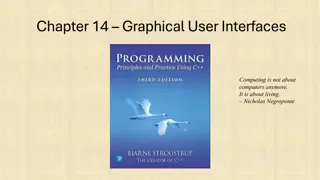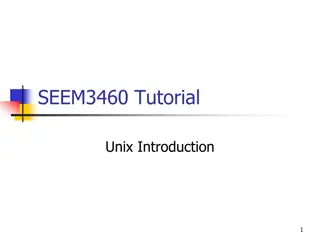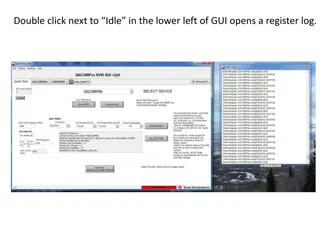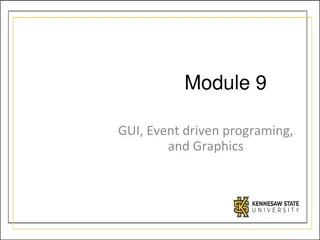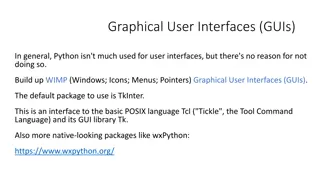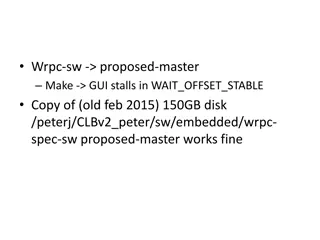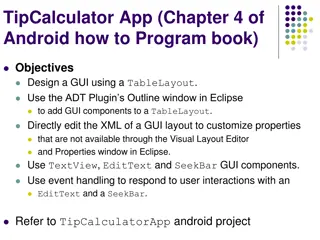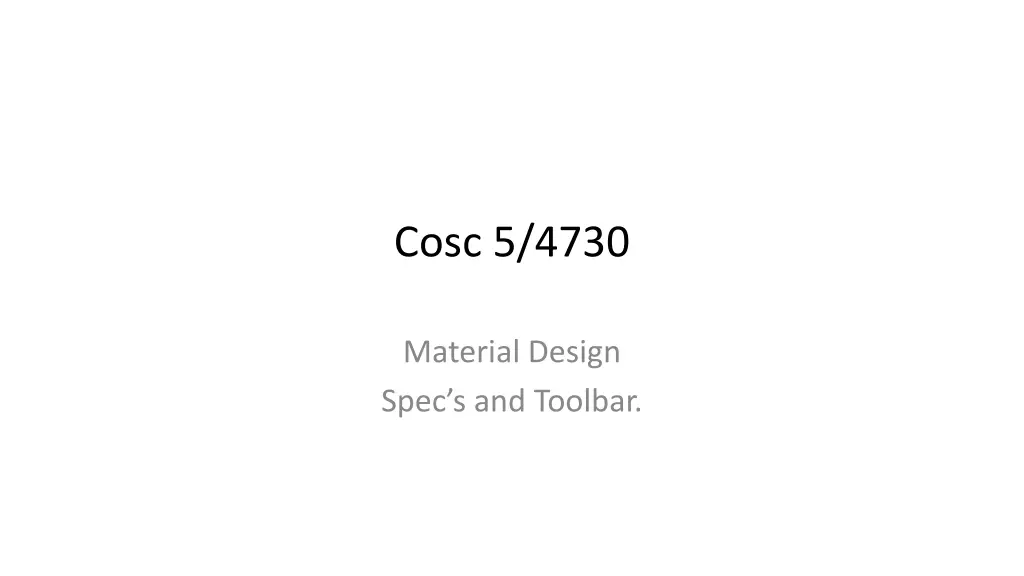
Material Design Specifications and Theme Customization
"Explore Material Design specifications for Android apps, learn about theme customization, color schemes, and styles for different Android versions. Understand how to implement Material Design in your app development process."
Download Presentation

Please find below an Image/Link to download the presentation.
The content on the website is provided AS IS for your information and personal use only. It may not be sold, licensed, or shared on other websites without obtaining consent from the author. If you encounter any issues during the download, it is possible that the publisher has removed the file from their server.
You are allowed to download the files provided on this website for personal or commercial use, subject to the condition that they are used lawfully. All files are the property of their respective owners.
The content on the website is provided AS IS for your information and personal use only. It may not be sold, licensed, or shared on other websites without obtaining consent from the author.
E N D
Presentation Transcript
Cosc 5/4730 Material Design Spec s and Toolbar.
Material Design First and for most, Material Design is a spec used by android to have app look similar and function in similar matter. About every 2 to 3 years google puts a set of spec. This years is called Material Design and is mostly for lollipop and can back ported to 4.X devices as well. The spec s are very long and I m going to cover them all here. http://www.google.com/design/spec/material- design/introduction.html#
Theme and Colors http://www.google.com/design/spec/style/color.ht ml#color-ui-color-application The colorPrimary is a 500 color ColorPrimaryDark is a 700 color colorAccent is a A200 color textColor, textColorPrimary, textColorSecondary windowBackgroundColor navigationBarColor which is normally a colorPrimary color as well. http://www.materialpalette.com/indigo/pink or http://www.materialpalette.com/ maybe helpful in picking colors. Note, only ColorPrimary, colorPrimaryDark, and colorAccent are back supported in 4.4 (API 19) and below
Example android 4.4 .x android 5.0.x+
Theme and Colors (2) values/styles.xml <resources> <!-- Base application theme. --> <style name="AppTheme" parent="AppTheme.Base"> </style> <! customizations for 4.4.X and before <style name="AppTheme.Base" parent="Theme.AppCompat.Light.DarkActionBar"> <item name="colorPrimary"> @color/primaryColor</item> <item name="colorPrimaryDark"> @color/primaryColorDark</item> <item name="colorAccent"> @color/accentColor</item> </style> values-v21/styles.xml <resources> <style name="AppTheme" parent="AppTheme.Base"> <!-- Customize your theme here. --> <item name="android:colorPrimary"> @color/primaryColor</item> <item name="android:colorPrimaryDark"> @color/primaryColorDark</item> <item name="android:colorAccent"> @color/accentColor</item> <item name="android:textColorPrimary"> @color/textColor</item> <item name="android:textColorSecondary"> @color/textColorSecondary</item> <item name="android:navigationBarColor"> @color/navigationBarColor</item> <item name="android:windowBackground"> @color/windowBackgroundColor</item> </style> </resources> </resources> Note, since we are targeting 24 and above. you can just put everything in the values/styles.xml file now.
Theme and Colors (3) <?xml version="1.0" encoding="utf-8"?> <resources> <!-- a good place to try different colors is http://www.materialpalette.com/ Also googles: http://www.google.com/design/spec/style/color.html--> <!-- 500 color --> <color name="primaryColor">#3f51b5</color> <!-- 700 color --> <color name="primaryColorDark">#303f9f</color> <!-- A200 other color --> <color name="accentColor">#ff4081</color> Values/colors.xml <color name="primaryColorLight">#C5CAE9</color> <color name="textColor">#FFFFFF</color> <color name="textColorPrimary">#212121</color> <color name="textColorSecondary">#727272</color> <color name="windowBackgroundColor">#607d8b</color> <color name="navigationBarColor">#303f9f</color> </resources>
DayNight theme. The dayNight theme is part of the appcompat library. This works with the user's setting for light and dark themes. It will attempt to pick darker theme for dark theme or lighter for light theme. Plus understands if a user has their theme set to change for Day or Night Theme.AppCompat.DayNight Also has a noactionbar, plus the rest of the variations. There is also a DayNight them in the androidx material library. This is now default in the Android template. Theme.MaterialComponents.DayNight Requires com.google.android.material:material:1.2.1+ to use. Also has a noactionbar, plus the rest of the variations.
Theme.MaterialComponents.DayNight For the light theme, this will use the colorPrimary for the actionbar/toolbar as normal But for the dark theme will be default to black. Also will not use the colorPrimary. So you should use colorSurface. <item name="colorSurface">@color/colorPrimaryDark</item> Note, I'm using a colorPrimaryDark one, since this is the dark theme.
Easier to show in code. https://github.com/JimSeker/ui/tree/master/Material%20Desi gn The darkTheme, simpeDemo go through colors, and pieces.
References https://developer.android.com/training/material/theme.html
QA &

